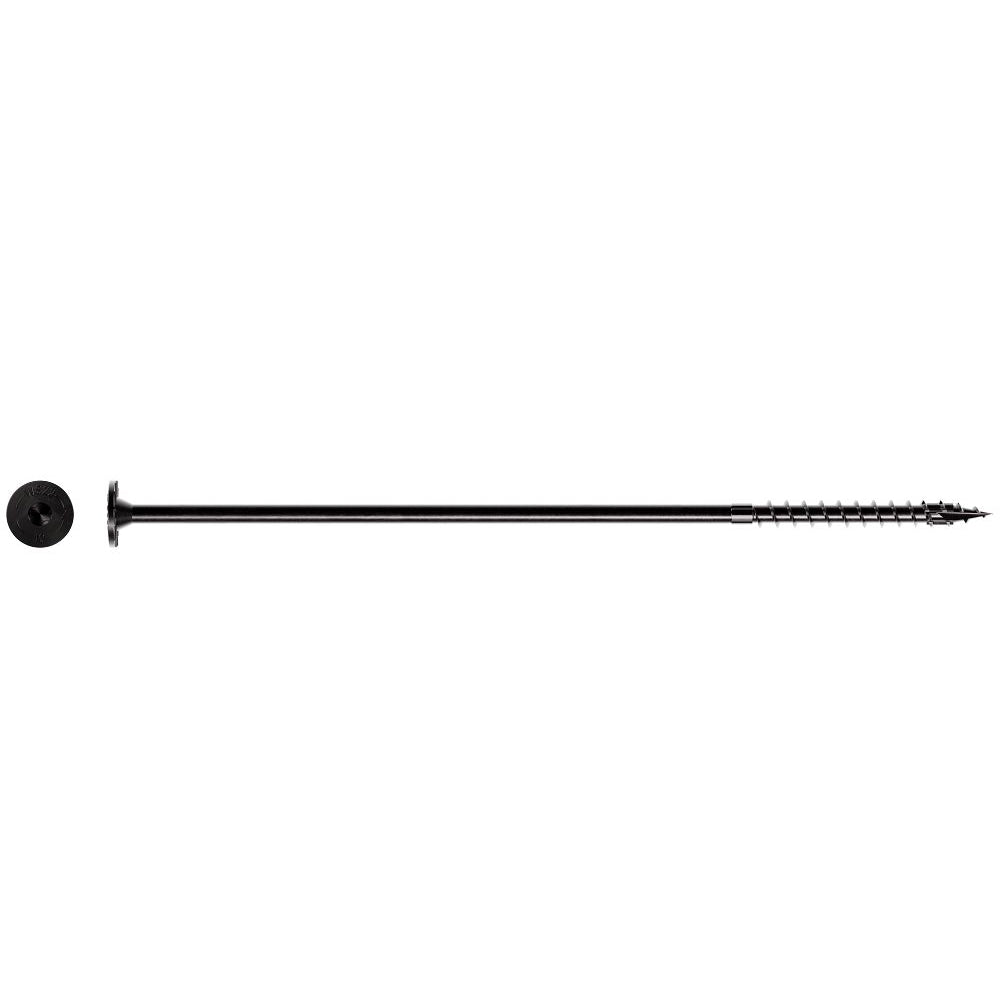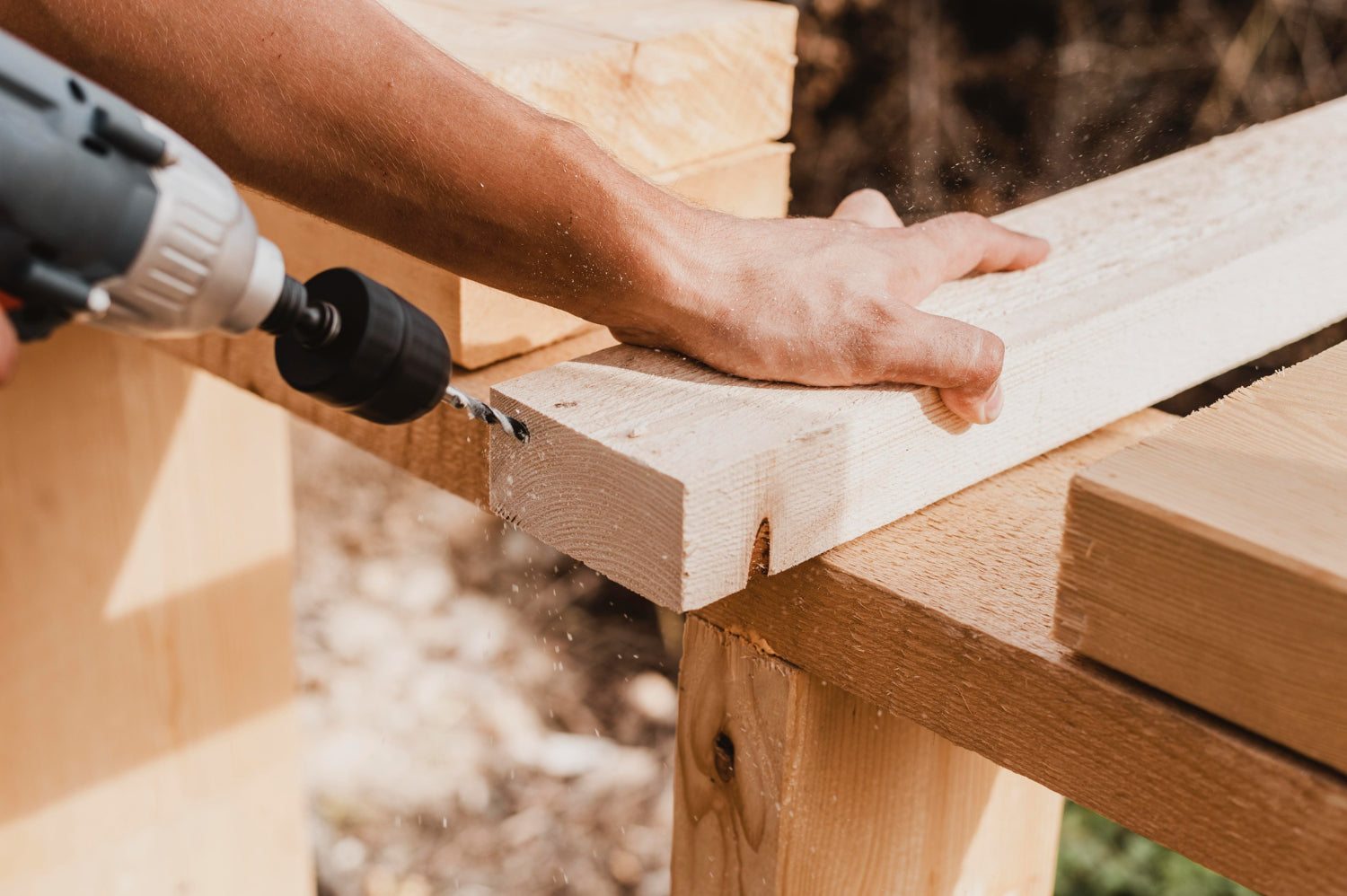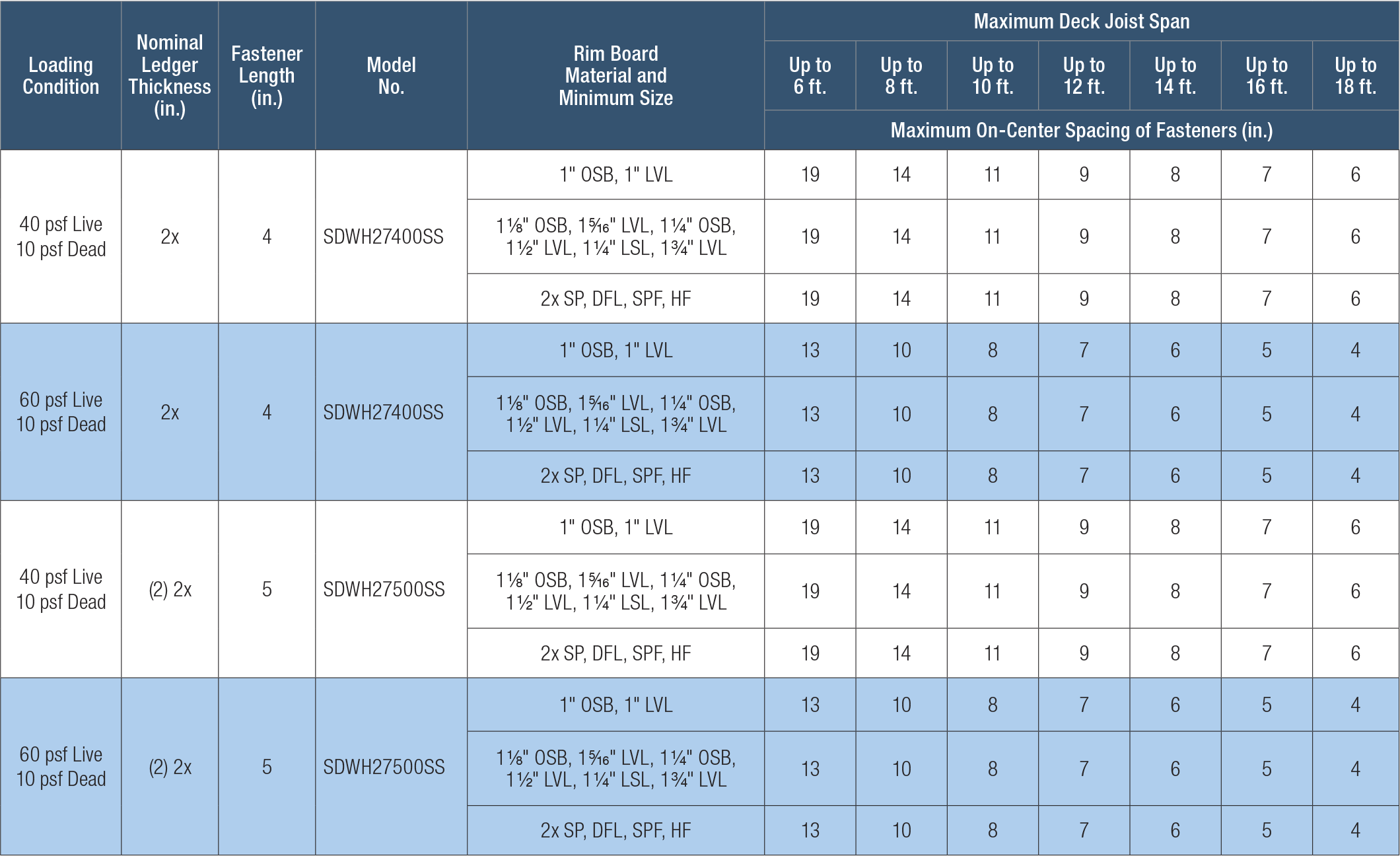SDWS Exterior Timber Screw
SDWS Exterior Timber Screw
For builders and makers who demand strength without compromise, the Strong-Drive SDWS Timber Screw delivers precision, durability, and confidence in every connection. It’s the fast, reliable choice for projects where performance matters and every joint counts.
Key Features
Key Features
- Type 316 stainless steel for maximum corrosion protection.
- No predrilling necessary in most applications.
- Driver bit included (replacement driver bit — BITHEXR516-R1 or BITHEXR12-R1).
- Can be used in ledger applications.
- Unique “box” thread design with raised-ridge technology significantly reduces driving torque .
- Hex-washer head provides large bearing area.
Applications
Applications
- Structural wood-to-wood and engineered-wood connections, including ledger.
Product Includes
Product Includes














Using the best fasteners speeds up your works and improves overall quality.
Stainless steel fasteners resigned for contractors who care about every detail. Simpson Strong-Tie Screws are strong, reliable, and made to endure.

Product Info
The Strong-Drive SDWS Timber Screw offers a high-strength, easy-to-install alternative to traditional lag screws and through-bolts.
Ideal for both contractors and DIY enthusiasts, it is IAPMO UES ER-192 listed and meets 2018, 2021, and 2024 IRC and IBC code requirements for most common wood framing applications.
This screw delivers consistent performance in structural wood and engineered timber projects.
Technical Specs
Allowable Shear Loads | Douglas Fir–Larch & Southern Pine Lumber

See footnotes below.
Allowable Shear Loads | Spruce-Pine-Fir & Hem-Fir Lumber

1. All applications are based on full penetration into the main member. Full penetration is the screw length minus the side member thickness.
2. Allowable loads are shown at the wood load duration factor of CD = 1.0. Loads may be increased for load duration per the building code up to a CD = 1.6. Tabulated values must be multiplied by all applicable adjustment factors per the NDS.
3. For minimum fastener spacing requirements for both side and main members, see the Spacing Requirements Figure and Table below.
4. For in-service moisture content greater than 19%, use CM = 0.7.
5. Loads are based on installation into the side grain of the wood with the screw axis perpendicular to the face of the member.
Spacing Requirements

1. For axial loading only, use the following minimum dimensions: end distance = 3 1/4", edge distance = 1 3/8", spacing parallel to grain = 2 1/4", spacing perpendicular to grain = 1 3/8".

1. For axial loading only, use the following minimum dimensions: end distance = 3 1/4", edge distance = 1 3/8", spacing parallel to grain = 2 1/4", spacing perpendicular to grain = 1 3/8".
Reference Allowable Withdrawal Loads | Douglas Fir–Larch, Southern Pine, Spruce-Pine-Fir & Hem-Fir Lumber

1. The tabulated reference withdrawal design value, W, is in pounds per inch of the thread penetration into the side grain of the main member.
2. The tabulated reference withdrawal design value, WMax, is in pounds where the entire thread length must penetrate into the side grain of the main member.
3. The tabulated reference withdrawal design values, W and Wmax, are shown at a CD = 1.0. For end-grain withdrawal, Ceg = 0.65. Tabulated values must be multiplied by all applicable adjustment factors from the NDS as referenced in the IBC or IRC.
4. Embedded thread length is that portion held in the main member including the screw tip.
5. Values are based on the lesser of withdrawal from the main member or pull-through of a 1 1/2" side member.
6. For in-service moisture content greater than 19%, use CM = 0.7.
2024, 2021 & 2018 IRC Compliant Spacing for a Sawn Lumber Ledger to Rim Board with One or Two Layers of 5/8" Gypsum Board

1. Sawn rim board shall be spruce-pine-fir, hem-fir, Douglas fir-larch, or southern pine species. Ledger shall be hem-fir, Douglas fir-larch, or southern pine species.
2. Fastener spacings are based on the lesser of single fastener ICC-ES AC233 testing of the Strong-Drive SDWS screw with a safety factor of 5.0 or ledger assembly testing based on ICC-ES AC13 with a factor of safety of 5.0. Spacing does not include NDS wet service factor adjustment.
3. Multiple ledger plies shall be fastened together per code independent of the SDWS screws.
4. SDWS screw spacing values are equivalent to 2024/ 2021 /2018 IRC Table R507.9.1.3(1) and 2012 /2015 IRC Table R507.2. The table also provides SDWS screw spacing for a wider range of materials commonly used for rim boards, and an alternate loading condition as required by some jurisdictions.
5. Screws shall be placed 1.5" to 2" from the top and bottom of the ledger or rim board with 3" minimum and 6" maximum vertical distance between fasteners with horizontal on-center spacing per the table. End screws shall be located 6" from the end and at 1.5" to 2" from the bottom of the ledger. For screws located at least 2" but less than 6" from the end, use 50% of the load per screw and 50% of the table spacing between the end screw and the adjacent screw, and for screws located between 2" and 4" from the end, predrill using a 5/32" drill bit.
6. The design installation permits a wood structural panel (WSP) interlayer in addition to one or two layers of gypsum board. If present, the WSP shall be a maximum of 1/2" thick, adjacent to the framing and fastened directly to the framing per the code.
7. Gypsum board must be attached as required per the building code.
Subscribe to our emails
Be the first to know about new collections and exclusive offers.
- Choosing a selection results in a full page refresh.
- Opens in a new window.


